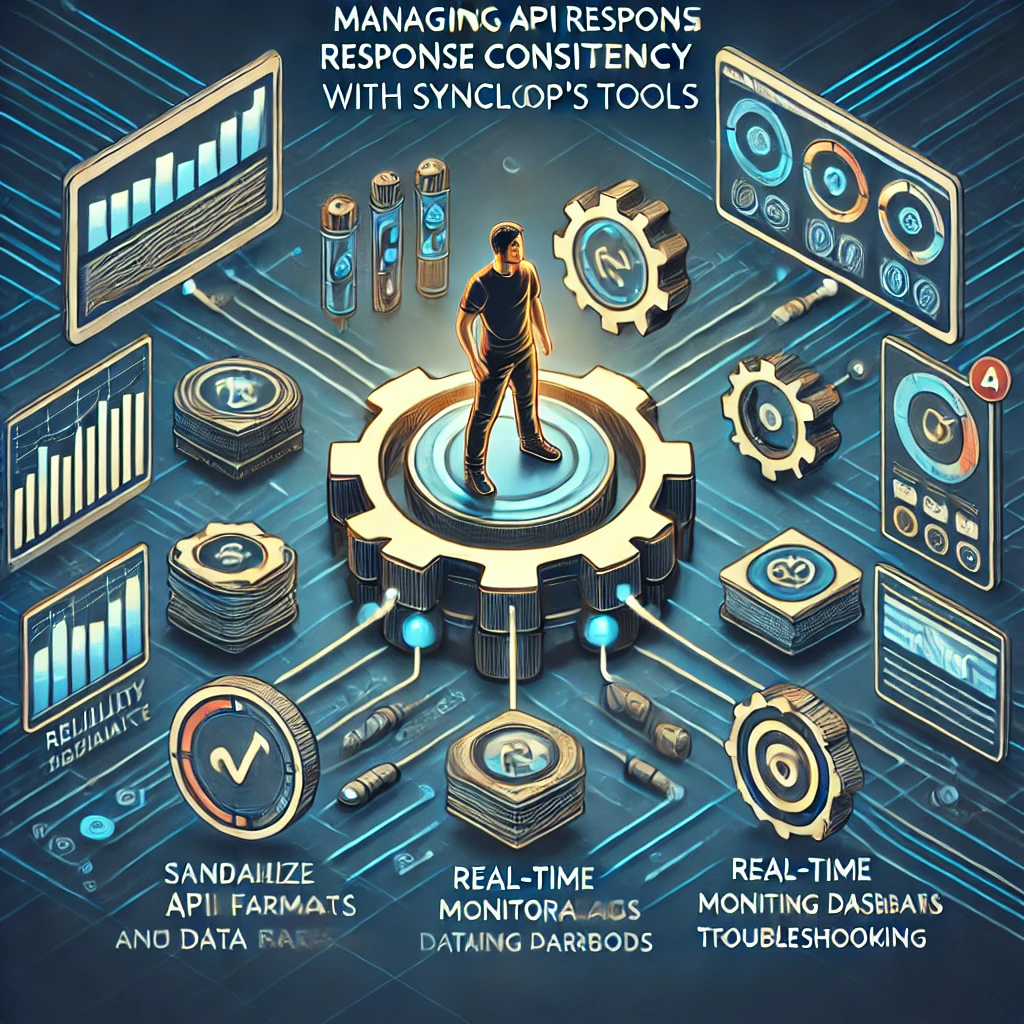Managing API Response Consistency with Syncloop's Tools

Syncloop offers powerful tools to manage and maintain API response consistency, including dynamic data transformation, schema validation, and real-time monitoring. This blog explores how Syncloop enhances API response consistency and provides actionable strategies for implementation.
Importance of Response Consistency
- Reliability: Predictable responses enable seamless client integration and minimize errors.
- Developer Trust: Consistent data structures and formats simplify development and debugging for clients.
- Scalability: Standardized responses support scalable architectures with distributed services.
- Compliance: Ensures adherence to data standards and regulatory requirements.
- Enhanced User Experience: Reliable APIs improve user satisfaction by reducing errors and inconsistencies.
How Syncloop Ensures API Response Consistency
1. Schema Validation
- Validate responses against predefined schemas to ensure structure, types, and formats remain consistent.
2. Dynamic Data Transformation
- Automatically map and transform data fields to match expected formats or structures.
3. Centralized Response Templates
- Use Syncloop’s response templates to standardize outputs across different services and endpoints.
4. Error Handling Standardization
- Implement uniform error codes, messages, and structures for better debugging and client interaction.
5. Real-Time Monitoring
- Track response patterns, latency, and anomalies with Syncloop’s analytics and dashboards.
6. Versioning Support
- Manage API versions effectively to ensure backward compatibility while introducing new features.
7. Testing and Simulation
- Simulate API requests in Syncloop’s sandbox environment to validate response consistency under various conditions.
Benefits of Using Syncloop for Response Consistency
1. Simplified Integration
Deliver predictable responses that clients can depend on, reducing integration challenges.
2. Improved Reliability
Minimize errors and inconsistencies with automated validation and dynamic transformations.
3. Faster Debugging
Streamline error identification and resolution with standardized error handling and real-time monitoring.
4. Enhanced Scalability
Ensure consistent responses even as APIs grow to handle more services, endpoints, or traffic.
5. Developer-Friendly APIs
Create APIs that are easier to use and integrate, fostering better adoption and satisfaction.
Real-World Applications of Response Consistency
1. SaaS Platforms
- Deliver uniform responses for multi-tenant environments, ensuring compatibility across clients.
2. Financial Services
- Maintain strict data consistency for transaction APIs to meet compliance and reliability standards.
3. E-Commerce
- Provide standardized product, inventory, and order data across diverse client platforms.
4. IoT Systems
- Ensure consistent data formats for real-time device-to-cloud communication.
5. Healthcare Applications
- Adhere to regulatory standards like HIPAA with consistent patient data and diagnostics responses.
Steps to Manage API Response Consistency with Syncloop
Step 1: Define Standard Schemas
- Create schemas for all API responses, specifying required fields, data types, and formats.
Step 2: Implement Schema Validation
- Use Syncloop’s validation tools to enforce schemas for every API response.
Step 3: Configure Response Templates
- Build templates in Syncloop to standardize outputs across multiple endpoints.
Step 4: Use Dynamic Transformation
- Map and transform data dynamically to ensure responses align with client expectations.
Step 5: Monitor and Optimize
- Track response metrics and anomalies using Syncloop’s dashboards to identify and address inconsistencies.
Step 6: Test Regularly
- Simulate requests in Syncloop’s sandbox to validate response behavior under different scenarios.
Best Practices for Response Consistency
- Adopt a Schema-First Approach: Define and enforce schemas early in the development process.
- Document Thoroughly: Provide clear and detailed documentation for API responses, including examples and error formats.
- Version Carefully: Maintain backward compatibility with proper versioning and clear deprecation policies.
- Monitor Continuously: Use real-time monitoring to track response patterns and address issues proactively.
- Handle Errors Uniformly: Standardize error messages and formats to simplify debugging and client-side handling.
Conclusion
Maintaining consistent API responses is critical for building reliable, scalable, and developer-friendly systems. Syncloop simplifies response consistency with tools for schema validation, dynamic transformation, and real-time monitoring, enabling developers to create robust APIs with confidence.
Whether managing SaaS platforms, financial services, or IoT ecosystems, Syncloop provides the features necessary to standardize and optimize API responses. Embrace Syncloop to enhance reliability, foster trust, and ensure seamless integrations for your applications.
A conceptual illustration of Syncloop-powered API response consistency, showcasing schema validation, dynamic data transformation, and real-time monitoring dashboards.
Back to Blogs